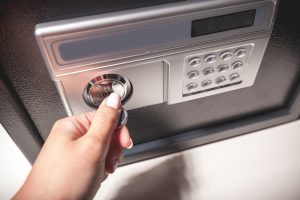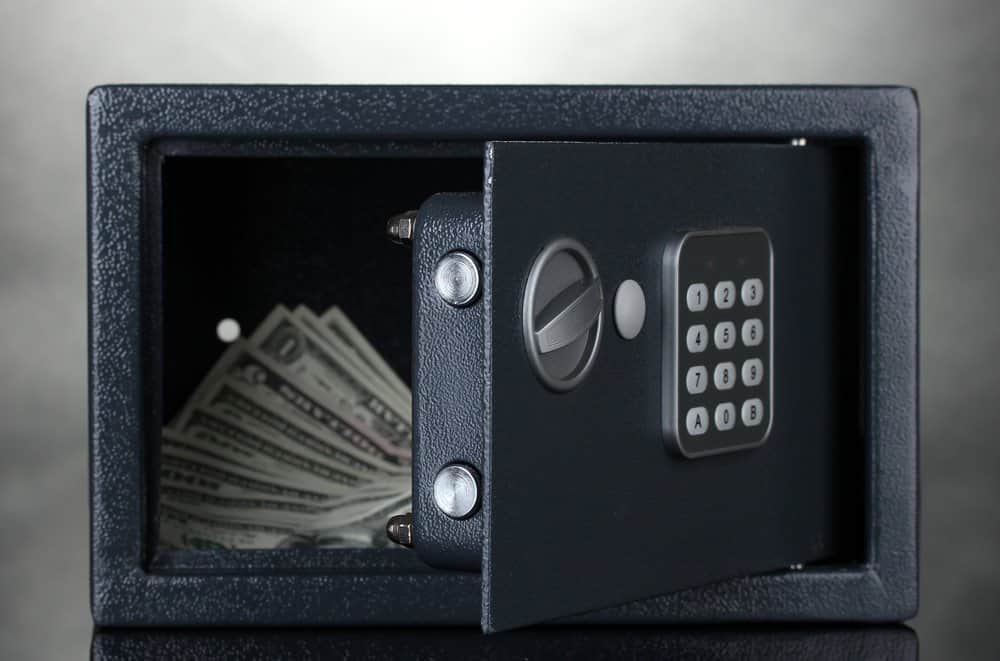
In the market for a safe? Don’t make the mistake of buying one that’s not entirely secure. Find out what to look for so you know how to pick the best safe here.
Homeowners have been using safes for centuries to store everything from cash to expensive belongings. But how “safe” are these home safes anyway?
Back in 2015, a report showed how one North American home safe manufacturer released their latest model with just one single flaw, but that one flaw quickly turned into a security nightmare.
Forbes then interviewed an expert locksmith who was able to break into the 86-pound safe in question in just 60 seconds!
Stories like this aren’t uncommon.
Professional burglars regularly use magnets, paper clips, wires, voltage, and even drinking straws to break into home safes.
But does this mean you have to forego getting your own safe? Not at all.
In fact, understanding the tricks of the lock pick trade is the very first step in choosing the best safe for your home.
Let’s discuss a few more important tips to know for choosing the most secure safe for your home.
Check For UL and TL Ratings
You don’t want to buy a safe without doing your research first.
To help homeowners choose the best safe for their home, manufacturers include safety ratings on their products.
If a safe doesn’t include any ratings whatsoever, keep moving. Not having any safety ratings is an indicator of a poor home safe.
Take note of the following safety rating system:
A UL rating means that safe has been tested and certified by Underwriters Laboratories, the leading public safety tester for home safes. However, If the safe only has one UL rating as a “resident security container” (RSC), that means it has just basic safety requirements.
The TL rating, which is also administered by Underwriters Laboratories (UL), stands for “tool-resistant” safe. This means your combination lock safe has optimal protection against mechanical and electrical tools used by burglars.
Remember to save this TL rating breakdown:
- A TL-15 rating represents the “best protection” against tools according to Underwriters Laboratories (UL).
- TL-30 rated home safes offer “superior protection.”
- TL-30×6 rated safes mean those products offer “extreme protection”, the highest TL rating.
How Thick Are Your Home Safe’s Walls and Doors?
Your safe’s wall and door thickness is a critical element to consider before purchasing a home safe.
Luckily, there are also ratings that indicate the level of wall thickness a safe has and the type of materials used.
Home safe wall ratings are classified with either “B” or “C” ratings.
If a home safe has a “B” rating, this means its walls are less than a half-inch thick and its doors are under an inch thick.
A C-rated home safe means its walls are made from steel and they’re just under a half-inch thick. C-rated home safes must also have doors that are at least an inch thick or more.
Is Your Safe Fireproof?
Next to safety ratings, you also want to ensure that your home safe can survive a fire.
Recent data from the National Fire Protection Association (NFPA) found there were more than 1.3 million house fires in just one year alone, and that annual estimate led to a staggering $14.3 million in property damages.
Home safes are also rated for their degree of protection against home fires. Again, the Underwriters Laboratories (UL) rating is the most important fire rating to look for when purchasing a safe.
Experts agree that homeowners should purchase a safe that has at least a 1-hour UL fire safety rating, also referred to as the “UL 350-1 hour” rating.
Forget losing sleep from an unsecured safe.
Planning truly does make perfect when it comes to protecting your valuables.
Don’t forget to bookmark these tips when you visit The Safe Depot to find the ideal safe for your home.
